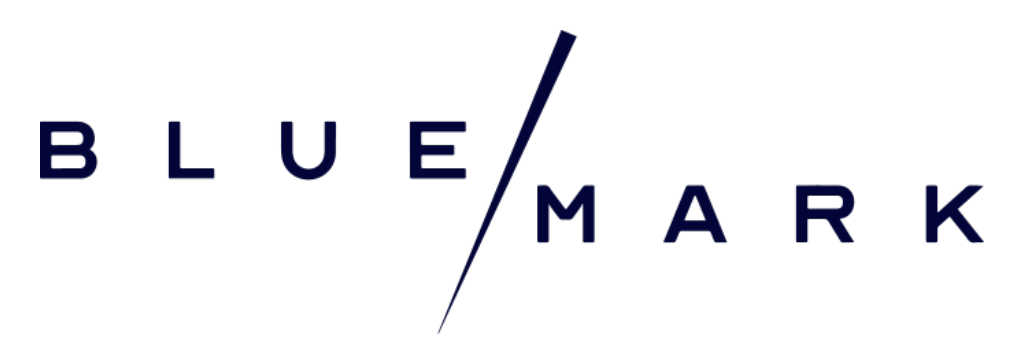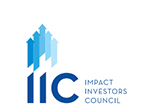|
Catalysing Capital for Impact
Dialogue with Paige Nicol, Senior Director, BlueMark
|
|

1 Take us through your experience with the impact measurement and management (IMM) practices in India over the recent years.
What have been your key observations and how has the IMM approach evolved, both for asset allocators and asset managers?
|
-
Over the past several years, we have seen more mainstream private markets investors in India recognize the inherent impact of the companies in whom they are investing. In many cases, this has led to investors launching new strategies or funds that go beyond ESG integration to deeper impact intentionality. Our observation at BlueMark has been that both in India, and globally, there is an opportunity for investors early on their impact journeys to draw on global IMM best practice. Much of what we know about IMM is grounded in the field of impact monitoring & evaluation - there is a long history of strong M&E practice across Indian enterprises and NGOs focused on development with the potential to translate into stronger IMM across the investment community.
-
Best practices in impact measurement and management have evolved significantly in recent years, in part thanks to the success of ongoing standardization efforts and the adoption of voluntary norms and principles. While adoption has taken different paths and paces in different regions, IMM practices have converged, in part due to global networks of investors and in part due to increasing alignment in the expectations of several leading asset allocators who invest with managers across borders.
-
At the same time, there are still some sources of confusion and tension between asset managers and asset allocators, especially about what best practices look like and what’s appropriate in different contexts. The Global Impact Investing Network (or GIIN) recently published a research report on the state of the market in which they looked at different trends and challenges. As it relates to challenges in the relationships between asset managers and asset allocators, relevant issues cited were “difficulty aligning on which impact metrics to measure and manage” (30%) and “challenges in aligning on best impact measurement and management practices to adapt” (27%).
-
While these are all very real challenges, I think it’s safe to say these percentages are way down from what they were a few years ago when there was much more confusion and uncertainty in the market. The market has matured very rapidly and I think we see that play out in how much alignment there is around what best practice IMM looks like.
|
2
Could you walk us through the impact verification process that BlueMark follows?
It will help our readers and interested asset managers understand the internal processes and data points they need to equip themselves with, to get started with the verification process.
|
-
We designed our verification methodology to be as simple and accessible as possible, while still upholding the integrity of what it means to offer an expert, third-party opinion that goes beyond a basic “checking-the-box” approach.
-
We have three core services:
- Practice verifications, focused on investors’ IMM frameworks
- Reporting verifications, focused on the completeness and reliability of an impact report
- Fund ID, a fund-level rating tool that evaluates impact strategy, governance, management and reporting
-
Across all of these services, our methodology brings together best practices and guidelines from relevant industry standards and regulations, such as those set by the Impact Management Project (IMP), the Impact Performance Reporting Norms (Reporting Norms), the Operating Principles for Impact Management (Impact Principles), SDG Impact, and regulatory regimes such as the Sustainable Finance Disclosure Regulation (SFDR).
-
We follow a simple three-step process for each verification engagement. The duration of the engagement depends on the complexity of the investor’s strategy and approach, but most verifications are completed within 3-6 weeks.
- Step 1: The investor completes an intake survey covering various aspects of their impact strategy, processes, and reporting approach.
- Step 2: A team of BlueMark experts will review the survey responses and data room, and meet virtually with the investment team to discuss and review the information provided.
- Step 3: BlueMark delivers a benchmarking report, roadmap, verifier statement, and seal summarizing our findings and recommendations.
-
There are some nuances in this approach depending on the specific use case for the verification. For instance, if an LP has requested assurance of specific KPIs we can incorporate this into our verification. If an investor is new to impact and wants to have an internal-facing review of their alignment to best practice, we can conduct a “diagnostic” which results in a gap analysis and recommendations for improvement.
-
Across all services, we emphasize not only the value of independent accountability, but also the learning benefits of external review; for this reason, we provide our clients with a management report that includes actionable suggestions for improvement alongside benchmarking to allow them to see how their approach compares to peers.
|
3
From your experience, what is the depth of impact reporting that international asset allocators are seeking from the funds?
What are some of the data points or metrics that they are keen to assess, which Indian impact funds must take cognisance of?
|
- Impact reporting remains a developing practice in the impact investing industry. BlueMark’s 2022-2023 research on the state of impact performance reporting revealed widespread dissatisfaction among asset allocators and managers. Common challenges include a lack of clarity around managers’ impact objectives, selective reporting of impact results, limited transparency about risks or failures, an absence of stakeholder perspectives, and inconsistent use of standardized metrics. Despite these challenges, our research uncovered strong alignment on key elements of effective impact reports. This informed the creation of BlueMark’s framework for verifying the Completeness and Reliability of impact reports. The framework ultimately shaped the development of the Impact Performance Reporting Norms by Impact Frontiers (version 1.0), addressing a critical gap by providing private fund managers with practical guidance on preparing robust impact performance reports for allocators.
- We were very encouraged to see the publication of the Reporting Norms which included a consultation with more than 350 asset managers, allocators, consultants, and assurance and verification providers. Impact Frontiers is now working on several workstreams to support reporter preparers, users, and independent reviewers in adopting the Norms. The end goal is to establish a shared understanding between market participants about which information should be reported and how frequently. We are still a long way from this end goal, but it is clear that asset allocators will have an important role to play in clearly communicating to their external fund managers about what information is a must-have versus a nice-to-have.
- As for which data points or metrics are going to be most important for asset allocators, we think it’s going to vary based on the type of investment strategy, the size of the fund, and the thematic areas of focus. A climate impact fund should have robust climate metrics, just as a social impact fund should have robust social impact metrics. Funds with more mature portfolio companies should have a larger dataset of available metrics than funds investing primarily in early-stage companies.
- Regardless of sector or geographic focus, we believe that all impact investors should aim to report progress against targets, driving more transparency in impact results relative to a baseline, relevant benchmarks, and forecast expectations. This is still not common practice due to data availability challenges as well as the difficulty of aligning complex portfolios with diverse impact goals around a common set of metrics, but we have seen significant progress and believe meaningful improvement is both possible and desirable.
|
4
Likewise, what are some of the common challenges that you see asset managers face, when it comes to building a rigorous impact measurement framework?
What could be some of the mitigants or way-around of managing such challenges?
|
- There is no one-size-fits-all approach to impact management, but there are certainly a number of excellent standards and frameworks for asset managers looking to align with best practices. The ones we look to most often for our practice verifications include the Operating Principles for Impact Management (or Impact Principles) and the 5 dimensions of impact developed by the Impact Management Project (or IMP).
- The challenges that asset managers may face will vary depending on the investment strategy and thematic areas of focus. But we can look to some of the GIIN’s recent research on IMM trends as a hint to what are the most common challenges in building a rigorous impact measurement framework.
- 92% of investors surveyed said “fragmentation across impact measurement frameworks” was a challenge to industry development over the past five years, with some of the most common approaches to impact measurement including generally accepted metrics, rating systems, indices of analytic tools (70%), academic or empirical evidence (64%), and custom impact targets (64%).
- 83% said “verifying impact data received by investees”, 79% said “integrating impact and financial management decisions”, and 69% said “finding suitable exit options”
- These data points offer just a snapshot of some of the biggest perceived challenges in the industry, which I think are fairly consistent across different investor groups. As noted above, one challenge we’ve heard repeated in many of our conversations with asset managers is the difficulty of identifying impact targets that are reasonably ambitious yet still achievable. The concept of impact target-setting is directly related to the challenge of establishing impact-linked incentives and adopting other accountability mechanisms, in particular independent verification. But there is a lot of exciting research and development in these areas that I think will provide helpful guidance to asset managers in the years ahead.
- Our advice for asset managers committed to IMM is to familiarize themselves with industry best practices and to actively participate in the various working groups, consultations and coalitions working to advance best practices. Standard-setters like the Impact Principles, field-builders like the GIIN, and member associations like IIC, AVPN and Impact Capital Managers all offer excellent programming and research on different topic areas. Odds are that whatever challenges an asset manager is dealing with, there are likely dozens of others that have already tackled very similar challenges. At BlueMark, we’re always excited when our benchmarking allows investors to connect dots across borders and learn from others who they might not have encountered otherwise.
|
5
From the perspective of impact reporting and verification, how does BlueMark differentiate between ESG Investing and Impact Investing?
|
- We don’t think it’s always necessary to differentiate between ESG investing and impact investing, at least in terms of how we conduct an impact verification. All investments have an impact, regardless of the investment strategy being used. What often differentiates ESG-oriented strategies from impact-oriented strategies is the intentionality with which impact is being measured, managed and reported.
- We would encourage anyone interested in this topic to explore the “Truth in Impact” paper published by our sister company, Tideline, that provides a how-to guide for investors seeking to define their approach to sustainable investing. In general, we think it is possible to identify where on the sustainable investing spectrum a particular fund or strategy sits based on degree to which the following three core pillars of impact investing are integrated into the investment process:
- Intentionality – Explicitly targeting specific social or environmental outcomes, such as the UN’s Sustainable Development Goals (SDGs)
- Contribution – Playing a differentiated role to enhance the achievement of the targeted social or environmental outcomes
- Measurement – Monitoring and reporting impact performance based on measurable inputs, outputs and outcomes
- There is plenty of gray area between and along these three pillars, but the best practices established in industry standards and frameworks still broadly apply.
|
6
For Indian asset managers and asset allocators, what are some of the actionable recommendations (throughout the investment process) that you would make, to align their IMM processes with international benchmarks and best practices?
|
-
Developing an IMM approach is something that can require a great deal of time, patience and refinement. Asset managers and asset allocators shouldn’t expect to be able to just jump into the impact market – it’s important to do the upfront work first. Usually this starts with extensive research to validate the alignment of the investor’s impact objectives with their investment thesis and contribution strategy; from here, a theory of change can follow, along with clear investment-level and portfolio-level criteria and goals. A common pitfall is jumping straight to investment-level impact analysis without clearly documenting a fund or sector level impact thesis.
-
Regardless of where a particular investor may be in their impact journey, step one is always familiarizing themselves with industry best practices and step two, naturally, is assessing their alignment to best practices.
-
At BlueMark, we specifically designed our verification methodology to provide an assessment of an investor’s strengths and weaknesses as it pertains to IMM to ensure that each investor has a roadmap of what they can do to improve. These types of assessments can be eye-opening in terms of highlighting where the gaps are and how much work remains to truly be recognized as a market leader. But we think it’s important not to discourage investors that may have a long way to go – after all, every investor in this market at some point had to start from scratch in designing and implementing an IMM approach, and it’s only after continuous testing and refinement that the IMM processes were robust enough to stand up to scrutiny.
|
|
|
Paige Nicol is a Senior Director at BlueMark, where she is responsible for the firm’s strategy, growth and operations across Europe and Asia. Prior to joining BlueMark’s management team in early 2022, she was the Director of Strategy & Insights at Luminate, part of the Omidyar Group. Paige received both her BSc and MSc in Foreign Service, with a focus on International Business and Finance, from Georgetown University.
About BlueMark
BlueMark is a leading independent impact verification and intelligence provider for the impact and sustainable investing market. As a certified B Corp, BlueMark's mission is to "strengthen trust in impact investing" by equipping investors with impact verification services, benchmarks, and analytics. BlueMark's verification methodologies draw on a range of industry standards, frameworks, and regulations, including the Impact Management Project (IMP), Impact Performance Reporting Norms (Reporting Norms), Operating Principles for Impact Management (Impact Principles), SDG Impact, Sustainability Disclosure Requirements (SDR), and Sustainable Finance Disclosure Regulation (SFDR).
At the time of the publication of this report, BlueMark has completed more than 220 verifications for impact investors managing a combined $327 billion in impact-oriented assets. Learn more about BlueMark and impact verification at www.bluemark.co.
|
|
About Impact Investors Council:
Impact Investors Council, India (IIC) is a member-based national industry body formed with an
objective to build and strengthen the impact investing eco-system in India. To know more about our work visit https://iiic.in or reach out to secretariat@iiic.in
|
Disclaimer: Data and Information in this newsletter is made available in good faith with the exclusive intention of helping market and ecosystem players, policymakers and the public build a greater
understanding of the Indian impact investing market. The data is collated from sources believed to be reliable and accurate at the time of publication. Readers are urged to exercise independent judgment and diligence in the
usage of this information for any investment decisions
Some of the information provided in this newsletter is supplied by third parties. It is important that all users understand that third party information is not an endorsement of any nature and has been put together with the
sole purpose of benefiting stakeholders.
|
| Unsubscribe |
|
|
|


